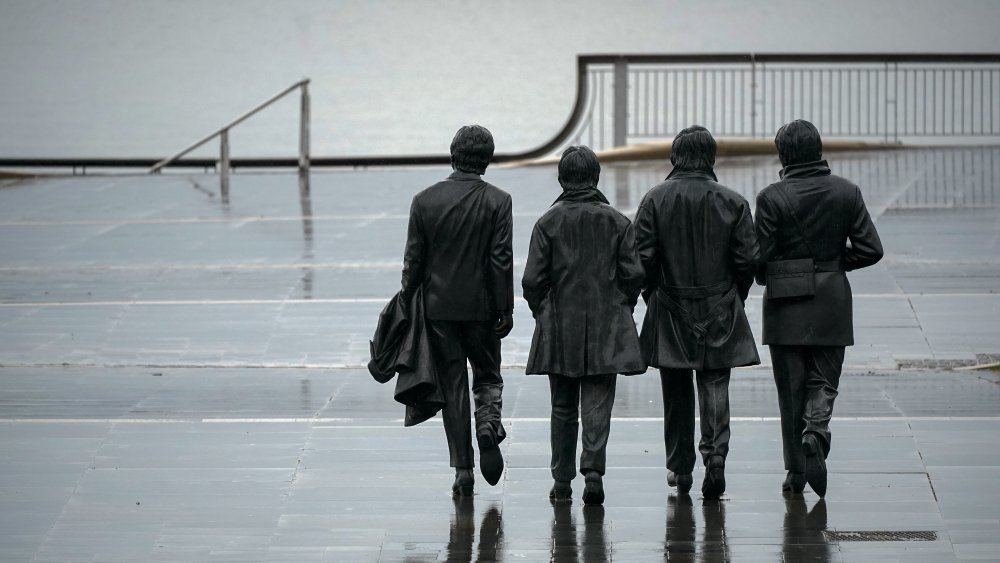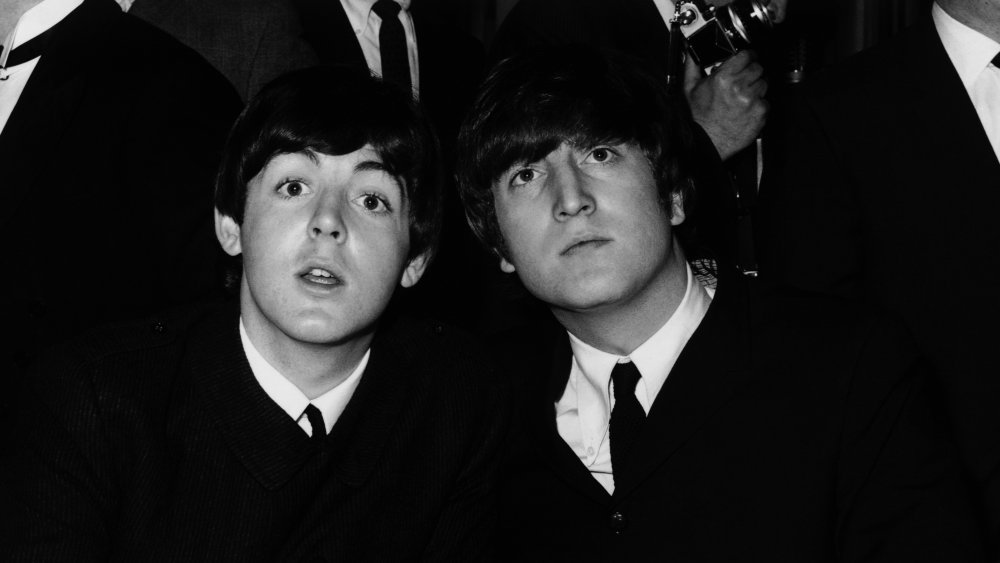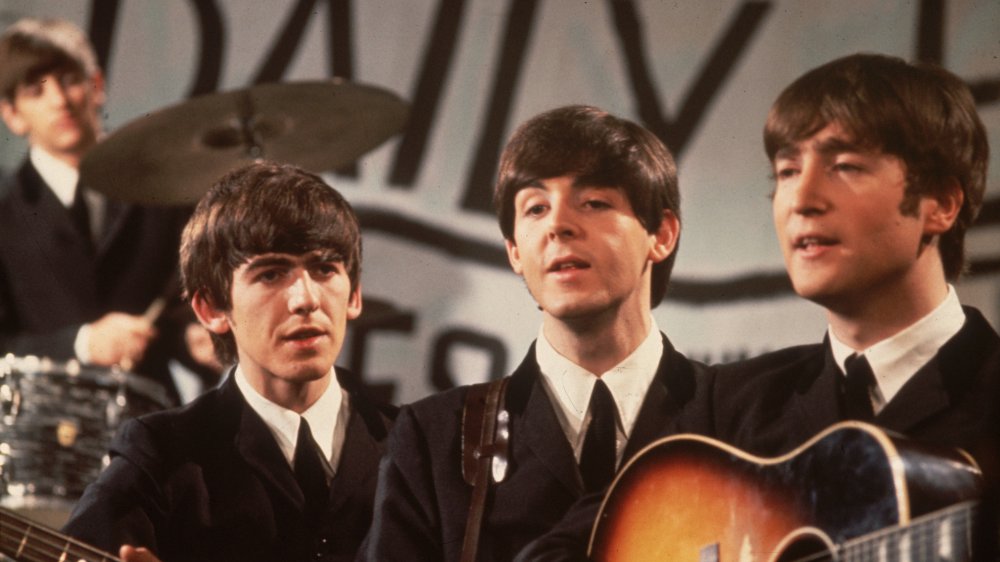Here's How John Lennon's First Band Turned Into The Beatles
While The Beatles first started playing in mid-1960, the band members of which it was comprised had, with the exception of the oft ignored Ringo Starr, already almost fully formed, morphing from a group called The Quarrymen.
A sixteen-year-old John Lennon formed The Quarrymen, or sometimes The Quarry Men, after the school most of the band attended at the time, the Quarry Bank School. In 1957, the revival of the skiffle movement that was currently ongoing in the UK, so to capitalize on this, The Quarrymen played skiffle. However, as All Music notes even at this point, Lennon was less interested in the highly animated, heavily rhythmic variant on American folk and country music that defined skiffle than rock and roll, which he consistently tried to include in the band's music.
Decades later, The Beatles Anthology would quote John Lennon in mid-reminiscence of those early days: "Our first appearance was in Rosebery Street — it was their Empire Day celebrations. They had this party out in the street. We played from the back of a lorry. We didn't get paid. We played at blokes' parties after that; perhaps got a few bob, but mostly we just played for fun." One could imagine a career in which John Lennon and The Quarrymen achieve local fame as a skiffle band but never developed further than that. However, on July 6, 1957, The Quarrymen showed up on the back of a lorry to play at a fete at St Peter's Church, Woolton, Liverpool.
A legendary partnership forms
At the fete, Ivan Vaughan, the dilettante bassist of The Quarrymen, introduced his classmate from Liverpool Institute to the rest of the band. The fifteen-year-old's name was Paul McCartney.
Paul McCartney remembered the show well, recalling it for Record Collector in 1995: "I remember John singing a song called 'Come Go With Me'... He didn't really know the verses, but he knew the chorus. The rest he just made up himself. I just thought, 'Well, he looks good, he's singing well and he seems like a great lead singer to me.'... He was really the only outstanding member, all the rest kind of slipped away."
Later on Lennon and Pete Sutton, the washboard player, debated the merit of bringing McCartney on board. After initial reservations — not wanting to be outshone — Lennon agreed and McCartney joined as the group's new lead guitarist. It did not take long, however, for McCartney to realize that he was not lead guitar material. On October 18, 1957, Paul McCartney made his debut with The Quarrymen during which he played the solo for the Arthur Smith song "Guitar Boogie." Halfway through the solo, Paul McCartney froze: "I thought, 'What am I doing here?' I was just too frightened; it was too big a moment with everyone looking at the guitar player. I couldn't do it. That's why George was brought in." The event's promoter evidently agreed because, as The Beatles Bible details, he marked The Quarrymen "Good & Bad."
The quiet one
On February 6, 1958, George Harrison joined The Quarrymen on recommendation by Paul McCartney, with whom he developed a friendship during bus rides to school. Lennon, then seventeen, wasn't immediately on board with having an almost fifteen-year-old hanging around them. Even McCartney, as Ultimate Classic Rock writes quoting from Anthology, had doubts about his age: "It seemed an awful lot at the time. If we wanted to do anything grown-up we worried about George looking young. We thought, 'He doesn't shave. ... Can't we get him to look like a grown-up?'" However, they had little choice considering that Harrison was a better guitarist than both McCarney and Lennon: "We asked George to join because he knew more chords." So, Harrison began as a fill-in guitarist until eventually he joined The Quarrymen by virtue of always being around. It also helped that Harrison's mother would give the boys whiskey as they practiced.
The three played as The Quarrymen for the rest of the year. In 1959, however, most of the band quit for one reason or another, leaving John Lennon, Paul McCartney, and Geroge Harrison as a trio. They began playing as Johnny and the Moondogs for a bit until John Lennon's friend and newly initiated bassist Stuart Sutcliffe suggested the Beatals after Buddy Holly and the Crickets, which changed to the Silver Beetles and then The Beatles, a small local band in Liverpool who had just wrangled a residency in Hamburg.


